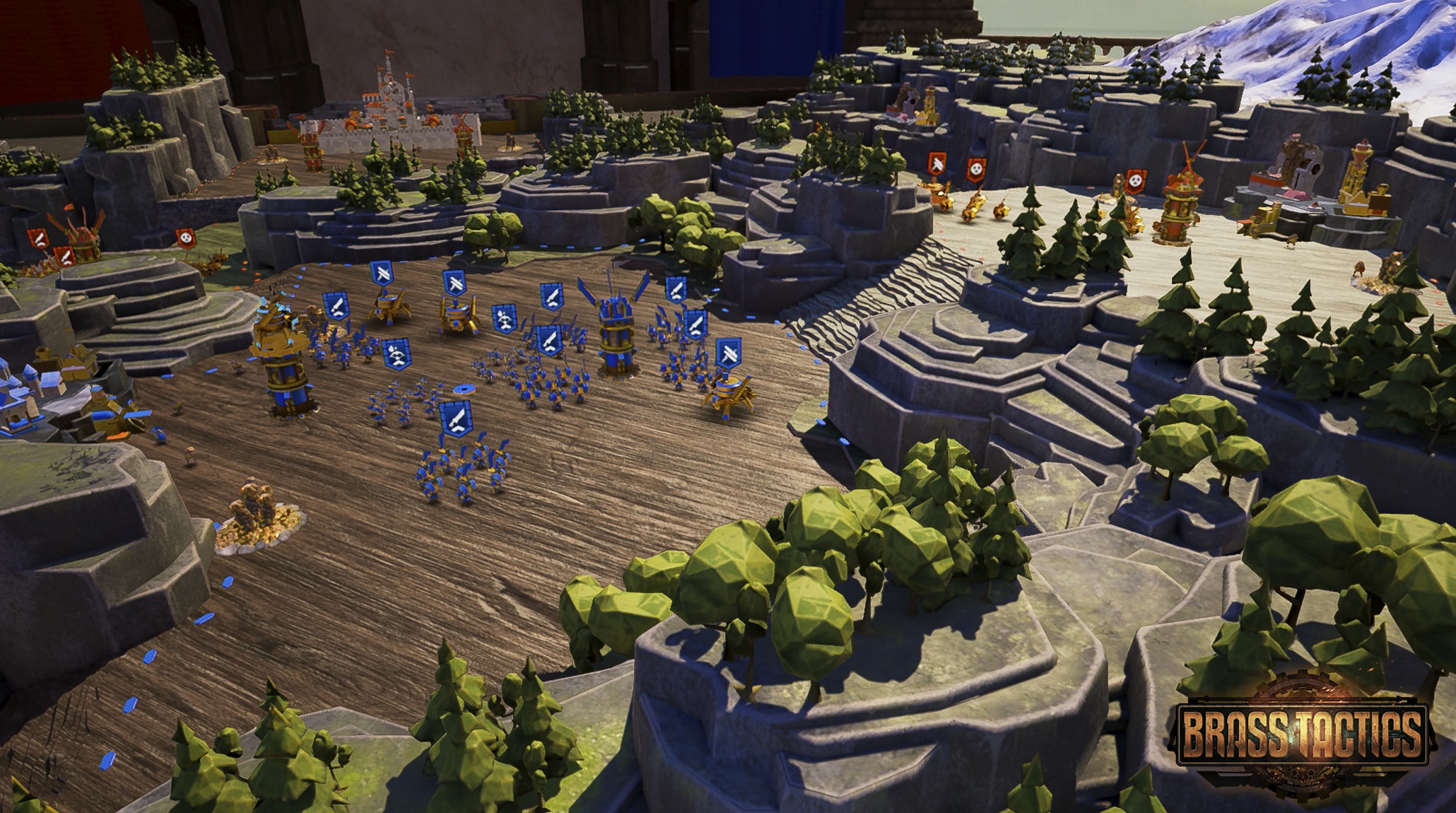Brass Tactics Feels Like VR Age of Empires
Brass Tactics, a virtual reality real-time strategy game, has a pedigree shows in both its solid mechanics and its visual polish.
SEATTLE – When you think of genres that work really well in virtual reality, a few immediately spring to mind: shooters, racers, simulations and perhaps adventure games. Real-time strategy is probably not near the top of that list, and yet if Brass Tactics is any indication, it’s a surprisingly good fit. This RTS comes from some of the veteran developers behind Age of Empires II, and its pedigree shows in both its solid mechanics and its visual polish.

I played Brass Tactics at PAX West 2017. While it’s the second time I’ve gone hands-on with the title, it’s the first time I got to play through the game’s tutorial and its single-player skirmish mode. Playing a real-time strategy with the Oculus VR touch controllers isn’t quite as intuitive as using a mouse and keyboard, but the tradeoff is a completely immersive play area, which is its own reward.
MORE: Most Anticipated Games
Brass Tactics has all the trappings of a traditional RTS: infantry, archers, cavalry, artillery, tanks and even flying units. Everything has sort of a low-fantasy/steampunk feel to it, and the overall aesthetic feels cohesive. Part of the reason is a distinctive, cartoonish visual style – the other part of the reason is that it doesn’t take place in a fantasy world, but on a wooden tabletop.
The game actually goes out of its way to draw attention to the fact that you’re essentially playing a tabletop wargame. An advisor during the tutorial compliments your ability to “master the table,” and you can even grab the edges to move the table up and down, then level it off at a comfortable height. The overall impression is that you’re playing with miniatures, albeit very detailed, animated ones.
In terms of gameplay, Brass Tactics is not tremendously different from the RTS titles that inspired it. You start off with a small castle and the ability to place a few unit-producing buildings. You can invest in upgrades to your economic and military units, although your base is small, and you won’t be able to purchase each upgrade, or produce every type of unit.
Instead, you’ll have to aggressively expand, capturing key strategic points around the map and placing towers on them. As you capture more points and produce more units, the game becomes a strategic juggling act, since your enemy will likely try to exploit your weak points. You can defend yourself or press your attack, but a relatively low population cap makes it difficult to do both. This keeps matches tense until the end.
Get instant access to breaking news, the hottest reviews, great deals and helpful tips.
Due to the constant tug-of-war, the game can feel chaotic at times, but mechanically, it’s surprisingly solid – especially since RTS and VR are not a natural fit for each other. The game will come out on Oculus later this year, but there’s no price announced yet.

Marshall Honorof was a senior editor for Tom's Guide, overseeing the site's coverage of gaming hardware and software. He comes from a science writing background, having studied paleomammalogy, biological anthropology, and the history of science and technology. After hours, you can find him practicing taekwondo or doing deep dives on classic sci-fi.
